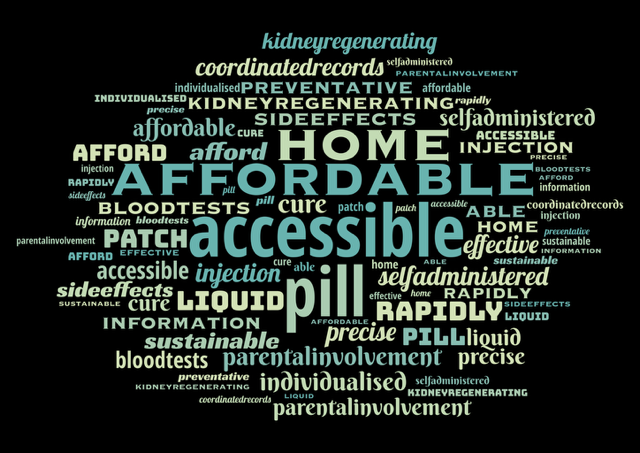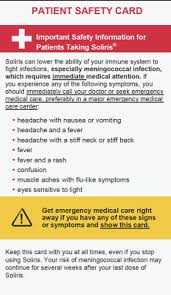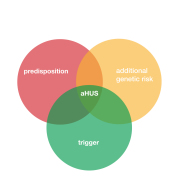The Steven Spielberg of aHUS videos (Jeff) has produce another aHUS video for RDD24.
Sixty six aHUS patients /carers starred in it*.
In a few word they expressed what they most wished for in an aHUS treatment. Each participant could specify one or more wish.
Collectively the 66 participants expressed 140 wishes across 19 topics.
These have been analysed and presented in the table below.
| Specification | Number | % |
| Affordable and accessible for all | 36 | 55 |
| Pill | 23 | 35 |
| Injection | 7 | 11 |
| Patch | 4 | 6 |
| Liquid | 4 | 6 |
| Cure | 16 | 24 |
| Home and self administered | 14 | 21 |
| Clinically effective | 2 | 3 |
| No side effects | 3 | 5 |
| Rapidly accessed | 9 | 14 |
| Dose Intervals | 7 | 11 |
| Sustainable | 2 | 3 |
| Precise to individual | 2 | 3 |
| Information about treatment options for patients and clinicians | 6 | 10 |
| Blood tests | 1 | 1.5 |
| Coordinated medical records | 1 | 1.5 |
| Preventative treatment | 1 | 1.5 |
| Regenerates kidneys | 1 | 1.5 |
| Involves parents | 1 | 1.5 |
Top specification (by 55% of participants in the RDD24 video) is that any treatment should be accessible and affordable where ever in the world there are aHUS patients.
This reflects a growing awareness of the plight of those patients who are not living in countries where effective treatments are marketed or funded. Accessibility depends on pharma selling their treatments in all countries and those countries’ national health care providers having the ability to pay.
This is not just down to pharma list prices as Global Action has demonstrated on many occasions but the “average cost” for all patients taking into account real life evidence of use. Advocates in countries without access would do well to listen to what Global Action has said about this matter.
This specification does mean of course that patients would forego existing treatments if not all could afford these treatments like them but as the 2020s progress other technologies/options in more countries are a “must have”.
If a treatment is accessible and affordable, it would seem 35% of participants’ preferred treatment option would be a pill taken orally. To those the 6 % who mentioned a liquid medicine added support for an oral medicine. Mention of a patch is a novel thought.
A surprisingly high number of participants, 1 in 4 , have mentioned a cure. Reflecting greater understanding of what remission entails and of genetic science developments else where. aHUS does provide a challenge to genetic therapy given the number of genetic variants there are and there being many patients without any identified complement genetic mutation. The cost of such treatment of course would be in the multi millions of dollars and mostly unaffordable right now. But the science will progress.
1 in 5 participants’ preference is a treatment that can be administered at home by the patient.
Very few patients mentioned side effects or the clinical effectiveness of a treatment. Perhaps the latter would be taken for granted in any approved technology and side effects of current therapies may not bd that a big issue for many. But dosing intervals was something mentioned by more (11%) with daily to one off options mentioned.
It is important to 1 in 7 patients that treatment begins rapidly. Seven working days is now Global Action’s proscribed timeline for an accurate diagnosis to start treatment to get the best of health outcomes. Almost 80% of children get that level of rapidity but less than 50% of adults do. So some way to go particularly for adult patients.
Less frequently cited treatment wishes include parental involvement, better coordinated medical records, blood tests and that supply is sustainable.
Also treatment to prevent an aHUS occurrence in the first place. That one makes you think.
Surprisingly few mentioned treatment being more precise to individual patients which would make treatment more affordable, effective and less burdensome overall.
Only 1 participant mentioned a treatment for regenerating kidneys which is something which aHUS patients would share with many kidney disease patients. If they can get it it will do for us.
10% of patients mentioned information about treatments. Current aHUS treatments come with information for clinicians and patients. There are leaflets in every carton of current treatments . Clinicians are obligated to abide by what they are told to allow them to administer treatments in the first place. Part of the obligation is to give information to patients including copies of medicine guidelines. Every current patient on treatment should have the information needed. So why do some still call for more?
Finally let us not forget the therapeutic benefit of a puppy or cupcakes.
This RDD24 project has revealed some insights into what the aHUS community thinks is important about an aHUS treatment. Over the years expectations change as the science develops and patients’ outlook towards better health outcomes raises the bar.
To the best of Global Action’s knowledge this is the first time that aHUS patients collectively have expressed opinions about existing and potential treatments in the public domain. The RDD24 video does just that for all to see.
Use the following link to view if the video if you have not already done so.
*Levi, Viraj, Arthur( deceased) Sidhuksha, Keaton, Darcey, Gabriel, Donna, Mandylyn, Chen, Tomas, Tituan, Joris, Carine, Laura, Christiene, Jann, Emily, Despena, Tara, Kamal, Andrea, Karina, Amelia, Magda, Leon, Joanna, Limari, Mohammed, Amy, Stephanie, James, Riley, Hedmer, Rylee, Camila, Jackie, Tila, Mary Taylor, Duke, Henick, Teagan, April, Lilith, Toris, Danielle, Kassandra, Jace, Diane/Ruby the dog, Ashid, Liam, Abigayle, Isabella, Stormy, Valerie, Katelyjn, Jill, Debbie, Kyler, Taylor, Amy, Lisa, Melissa, Linda, Michael, Ivan.

Article No. 644


